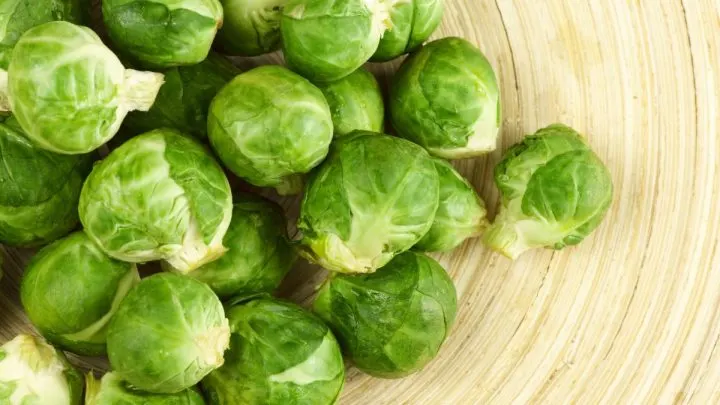If you have a home garden and grow Brussels sprouts, the last thing you want is black spots on Brussel sprouts. When you put a lot of effort and sweat into your garden, which is part utility and part hobby, of course, you will be sorry when something happens.
You often cannot control such things because they depend on the weather, growing conditions that sometimes change their direction of action, etc.
No matter how much water we give our plants and how much fertilizer we put to make them grow better, sometimes something bad will happen.
You don’t need to despair, because in this case, there is a solution for black spots on Brussel sprouts.
You won’t be able to solve some of them right away, it will take time, but you will learn the method of prevention is better than cure and how to treat it if there is a need for it.
About Brussel Sprouts
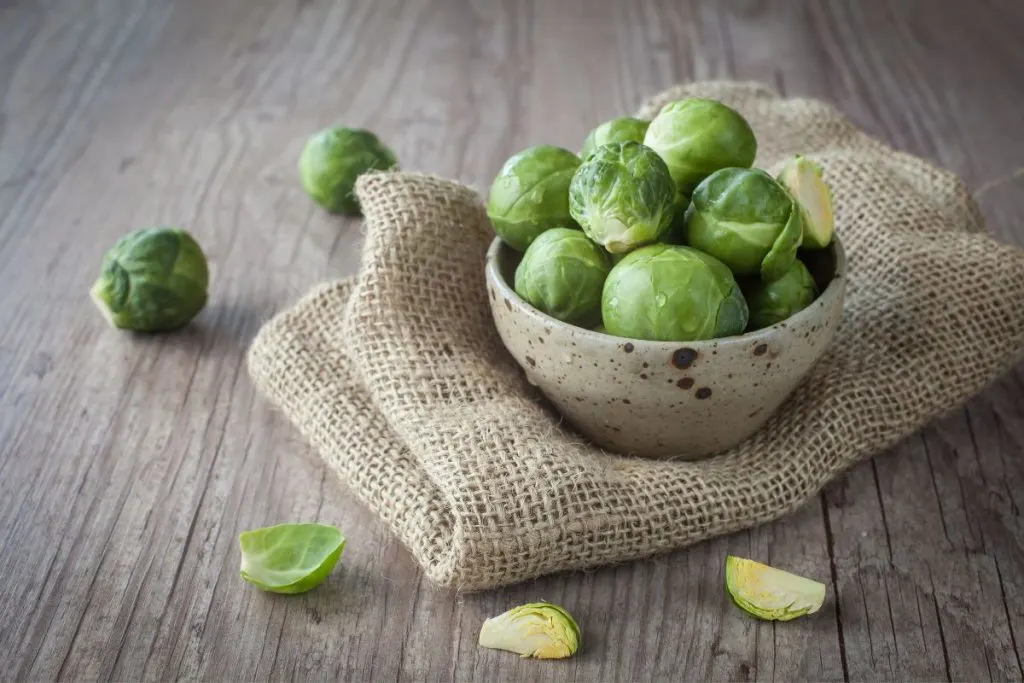
Cabbage (Brassica oleracea L.) is a dwarf cabbage whose heads are a few centimeters in diameter and is also known as brussels sprouts and brussels sprouts.
A common name that is still used is Brussels sprouts, and it comes from the capital of Belgium, where umbilical kale was grown as early as the 13th century.
This herbaceous plant belongs to the cruciferous family, and related species include oilseed rape, turnips, kale, black mustard, and broccoli.
Unlike other cabbages, navel cabbage is consumed by eating the entire buds of the plant – small round heads.
Umbilical kale requires a sunny location, water supply, and soil that is rich in nutrients, and fruits are an excellent source of vitamin C, folic acid, and potassium.
Due to their excellent endurance at low temperatures, brussels sprouts can be picked and eaten even in the winter months.
How Can You Tell If Brussel Sprouts Have Gone Bad?
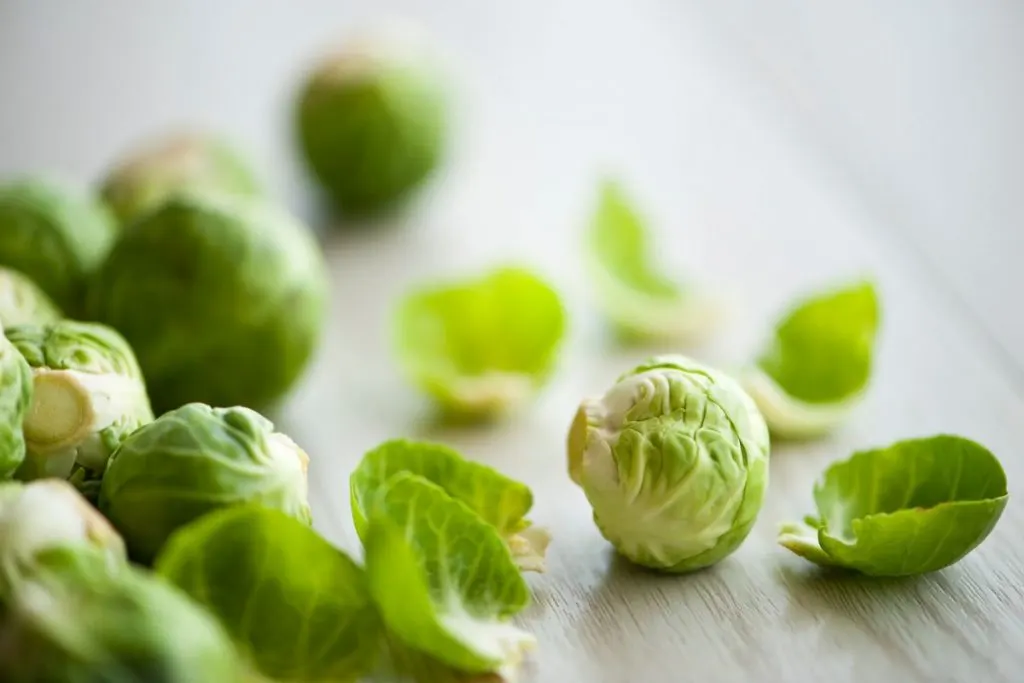
All Brassica crops are particularly susceptible to fungal pathogens. We’ve rounded up the most common ailments you’ll encounter, so you’ll be ready to tackle them before it’s too late.
After reading all of this we prepared for you below, you’ll be more than sure if your brussels sprouts have gone bad. Let’s read all about it.
Alternaria Leaf Spot Issues
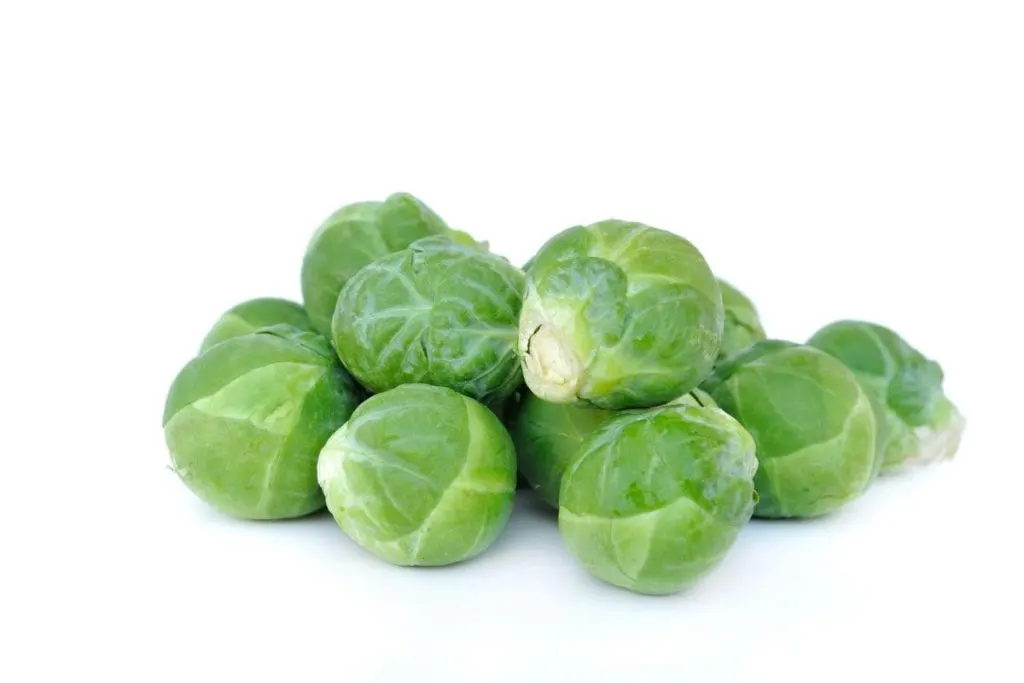
Black spot, also known as Alternaria leaf spot, is caused by the fungus Alternaria brassicicola. At first, many black needle-shaped spots appear on diseased leaves, but the spots quickly expand and coalesce, causing leaf necrosis and drop.
Symptoms usually start on the lower, older leaves, but as the problem progresses, it can cover the entire plant, including the leave tips. So that the leaves become black leaves.
Horizontal close-up of Brussels sprouts showing signs of Alternaria. Fortunately, this is usually only an esthetic problem. And even though it affects the bean sprouts, if the outer leaves are removed after harvest, the inner part is still intact.
If you want to control blackheads, fungicides can help. The hybrid shoot variety ‘Mighty’ is resistant to Alternaria. If you know this disease is a problem in your area, consider planting it next season.
Bacterial Leaf Spots Problems
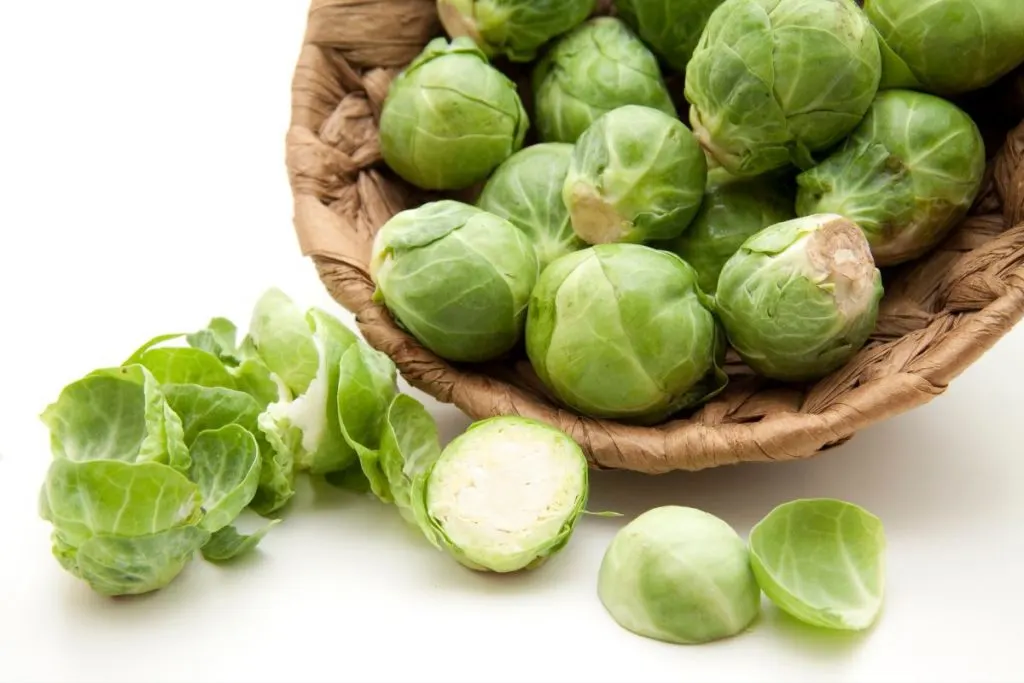
Brussels sprouts are best when the weather is cool and wet. Unfortunately, this is also true for Pseudomonas, the bacteria that causes bacterial leaf spots. As the name suggests, black or purple spots appear on the leaves, usually with a yellow halo.
They combine and the leaves can be covered with large, dry brown spots. Pathogens live on plant debris and seeds and can infect any type of cabbage, although Brussels sprouts, radishes, and turnips are the most common targets.
These problems do not occur when you’re planting something in relatively dry areas, but those in humid climates should be precautions. This means you should water from ground level, not always watering the leaves or heads in the morning.
Always buy certified disease-free seeds and clean up all debris around the plant. Weeds should also be removed, especially those belonging to the cruciferous family, such as mustard, watercress, and mint. Do not plant Brussel sprouts in the same place more than once every three years.
Bacterial Rot Disease Can Cause Black Spots Too
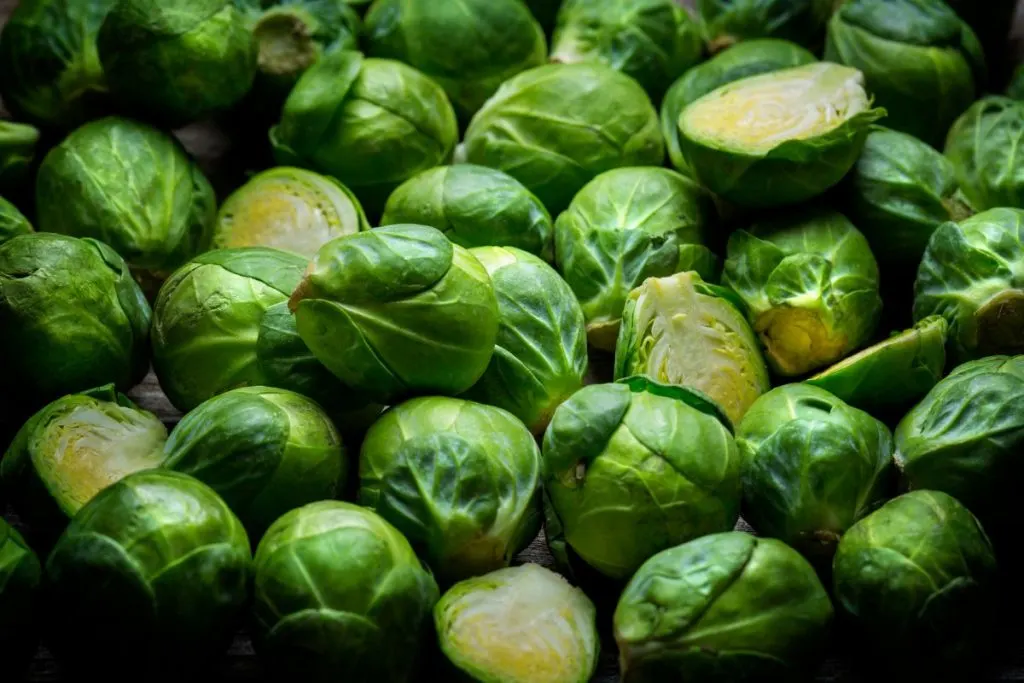
You may have experienced bacterial rot before and not even realize it. This disease causes all kinds of fruits and vegetables to rot in storage or fields.
If you have potato rot in your cellar, you may have bacterial rot. They usually attack raw brussels sprouts and you’ll notice that unique Brussel sprouts stink.
These injuries can be cuts, wind damage, or insects. Insects such as aphids, leafhoppers, and thrips can also carry pathogens and spread in water or through tools, hands, or clothing.
Because there is no cure, you must take precautions against this disease. Soak Brussel sprouts in a special liquid insect’s “anti-poison” and it should be good.
Of course, only its stem where it touches the ground. Don’t fear the poison once you’re about to eat it, even lightly cooked sprouts will kill poison fluid at 176 or 185 F.
Blame It On Disintegration – Black Spots On Brussel Sprouts
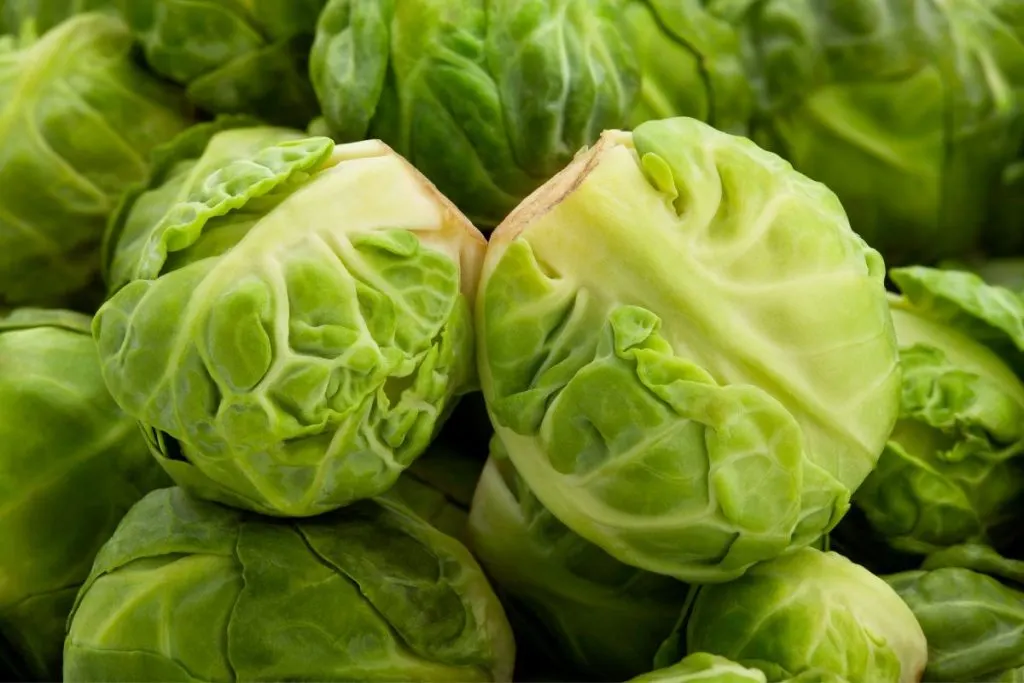
You don’t want your plants to be infected with any of the diseases on this list, especially black rot. It can quickly kill an entire plant.
The bacteria Xanthomonas is responsible for this devastating problem that causes root rot and plant death. What do you look for besides the most obvious symptoms of plant death?
Brussels sprouts initially show no symptoms. But eventually, yellow spots begin to appear on the edges of the leaves.
These are large, yellow, V-shaped spots that expand and point toward the center of the leaf. As the disease progresses, these patches become dry and brown with necrotic streaks.
Then the stems begin to rot from the inside and the roots rot underground. Eventually, the plants cannot sustain themselves even if the soil has enough moisture and begin to wilt.
It is difficult to catch this disease when it is just beginning because there is no evidence of this disease and the early symptoms can be similar to many others. However, if caught, it can be treated with a copper fungicide. It does not stop the disease, but it slows the onset.
Clubroot Can Cause Bad Brussel Sprouts
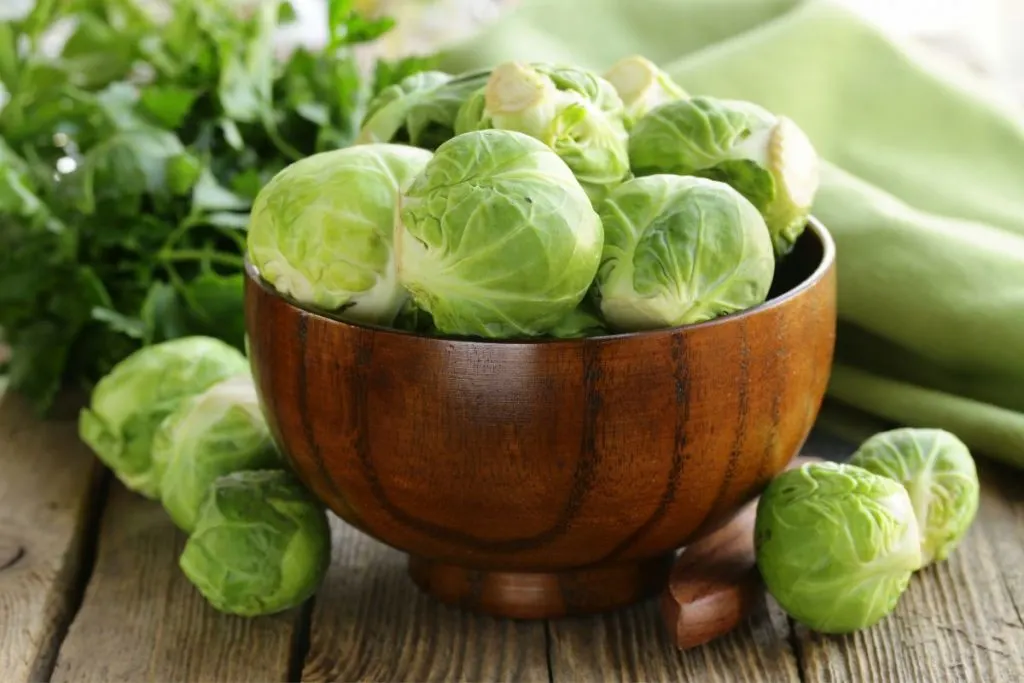
With names like clubroot, you might imagine a plant with a large tuft-like root structure underground. This is the bottom line.
Plants infected with this disease have deformed and enlarged club-shaped roots. Secondary roots may have large bulbous growths.
As the disease progresses, the roots begin to rot. Close-up portrait of a Brussels sprout plant uprooted from the ground, showing root rot. How do you know if a plant is infected until you pull it out and see the roots? It can be hard to tell.
Brussels sprouts can grow slowly and turn yellow. Also, if it is too hot or lacks water, the leaves will fall off easily.
- There is no good treatment other than adding lime to the soil to raise the pH above 7.0. It slows or stops the progression of the disease, but does not eliminate it. How can an obligate biotrophic protist called Plasmodiophora brassicae avoid root rot because it is nearly impossible to eradicate?
- Pathogens of this type are single-celled eukaryotic organisms that do not fall into the categories of plants, animals, or fungi, rather than a type of fungus or oomycete. Although often classified as another fungal disease, clubroot is something else.
Rotation is always good gardening practice, but the club’s roots require a new level of importance. Pathogens can live in the soil for up to 20 years, but they do not accumulate as much if you grow crucifers in the same place every 4 years.
Reduction – Black Spots On Brussel Sprouts
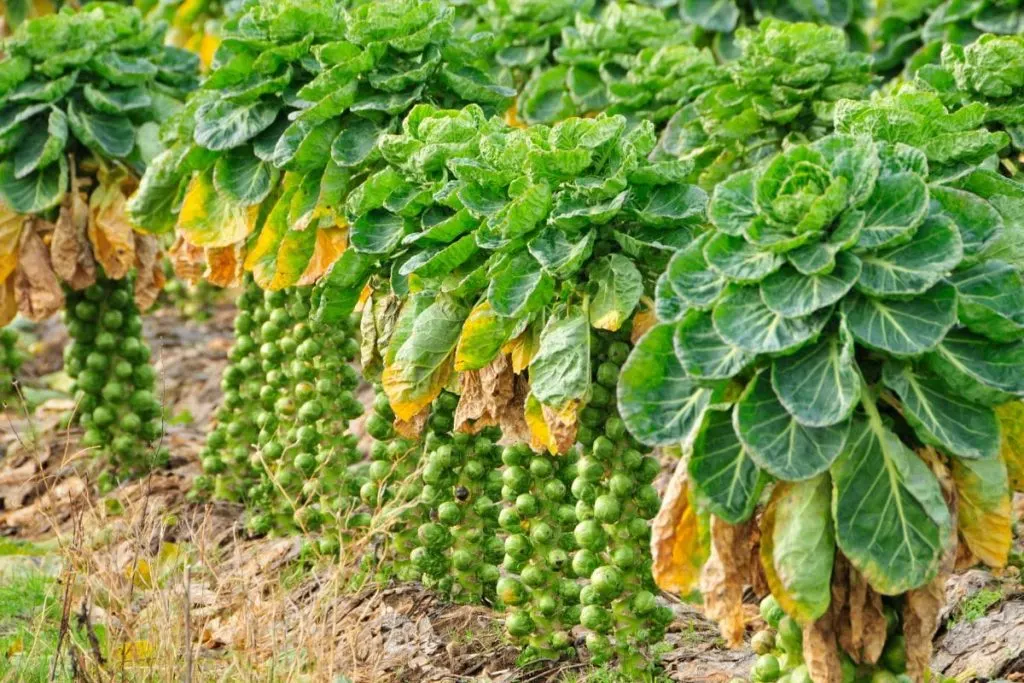
Moisture can affect a surprising number of vegetables, and infection can halt vegetable growing efforts. If you plant a seed in the ground, it will not sprout, or if it does sprout, it will become weak and wither.
Brown, water-soaked lesions can be seen on the lower part of the seedling stem. If your poor seedlings survive, they will never flower and you will have many or few heads.
Mildew Parasitic
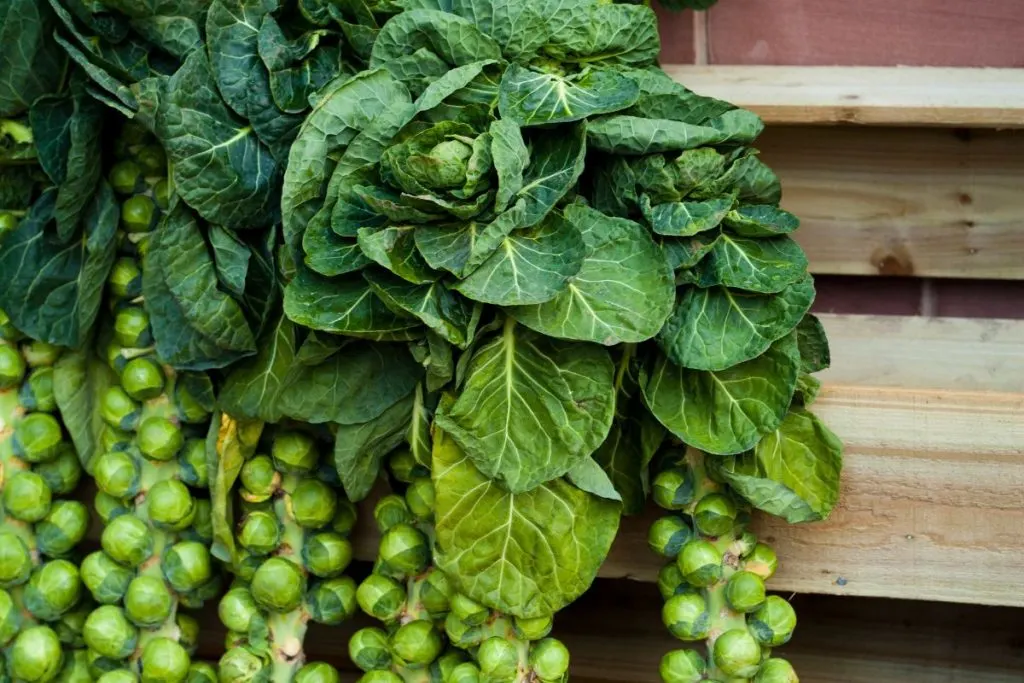
Mildew is a disease caused by the fungus Hyaloperonospora parasitic and is very common in cruciferous vegetables and many other vegetables. It also doesn’t matter if your plants are young or old.
This pathogen does not discriminate, but young plants are adversely affected. As the condition worsens, pathogens enter the stems, tops, and roots, causing rot. This problem can be difficult to avoid because it lives in seeds, soil, and plants.
It can be spread by wind and water. We want to do everything we can to avoid mold, but one day you will have to deal with it.
Powdery Mildew
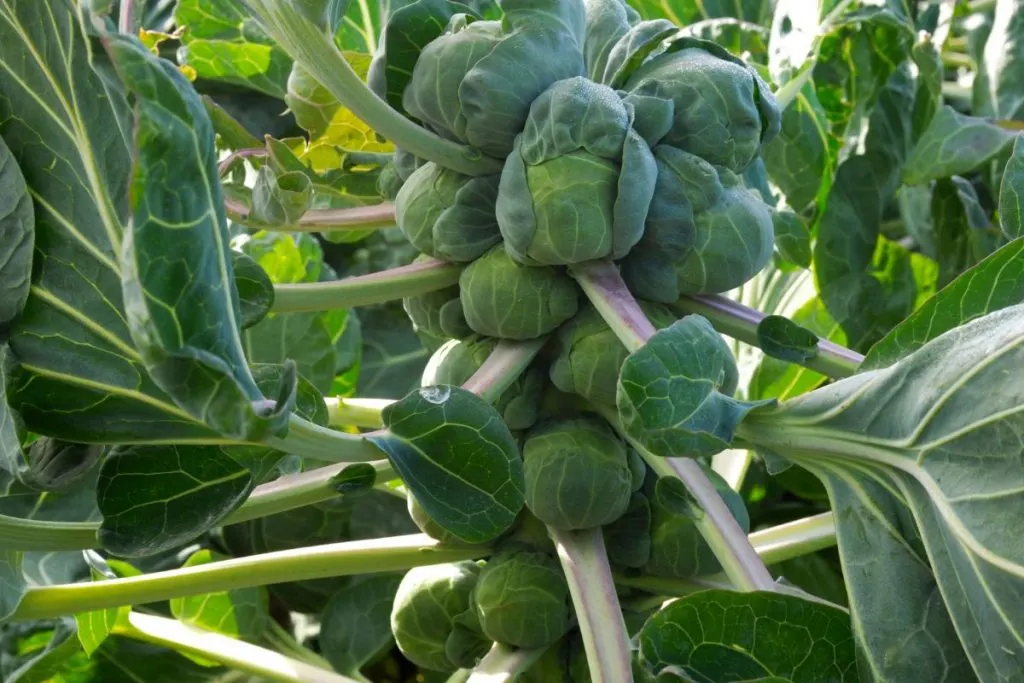
Most fungi that infect Brussels sprouts attack in cold or wet weather. However, powdery mildew is caused by the fungus Erysiphe which likes warm and dry conditions.
If you plant your seedlings in early spring or late fall, you usually don’t have to worry too much about this disease.
Even if your plant is infected with this fungus, it may not be ideal for the actual spread at this time. But the climate is changing. Spring and autumn are both warmer, and the risk of contracting the disease increases after summer.
If your plant suffers from mold, you can check: There are small white spots on the leaves, which gradually turn into powdery mildew.
Close-up horizontal view of Brussels sprout leaves affected by mold. Photo via Alamy.
Older leaves are usually the first to be affected, and new leaves are not affected until the disease begins to develop. At this time, the leaves turn yellow or brown and die.
Black spots may also appear on the shoots. Some cultivars and hybrids are resistant to powdery mildew. These include ‘Dimitri’, ‘Nautik’, and ‘Red Hornbeam’.
They are generally disease resistant, do not require repotting, and form heads reliably even in adverse environmental conditions.
You also need to make sure that the plant is not too thirsty or given too much nitrogen to make the problem worse. If mold is a common problem in your garden, pre-treat plants with products containing Bacillus subtilis.
Dark Spots – Black Spots On Brussel Sprouts
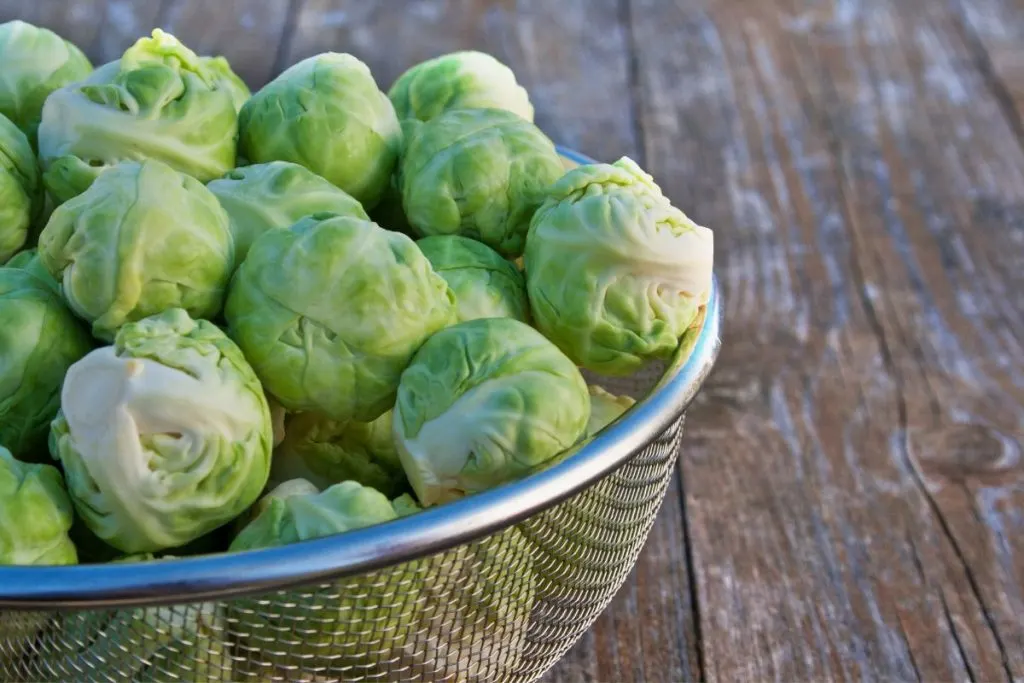
Attention, there is another mushroom waiting to be transformed into a Brussels vase! Mycosphaerella brassicicola, as the name suggests, causes a disease called ring spot which causes tiny spots on the leaves.
These spots are different from those caused by Alternaria leaf spots, which are gray and have small black spots in circles. Even if no spots appear on the shoots, enough spots on the leaves will slow plant growth or reduce yield.
It multiplies by water and wind in cold, wet weather and can survive for years in the soil. Rotate the crop annually, water at soil level, and spray with copper fungicide weekly until available.
Verticillium – Black Spots On Brussel Sprouts
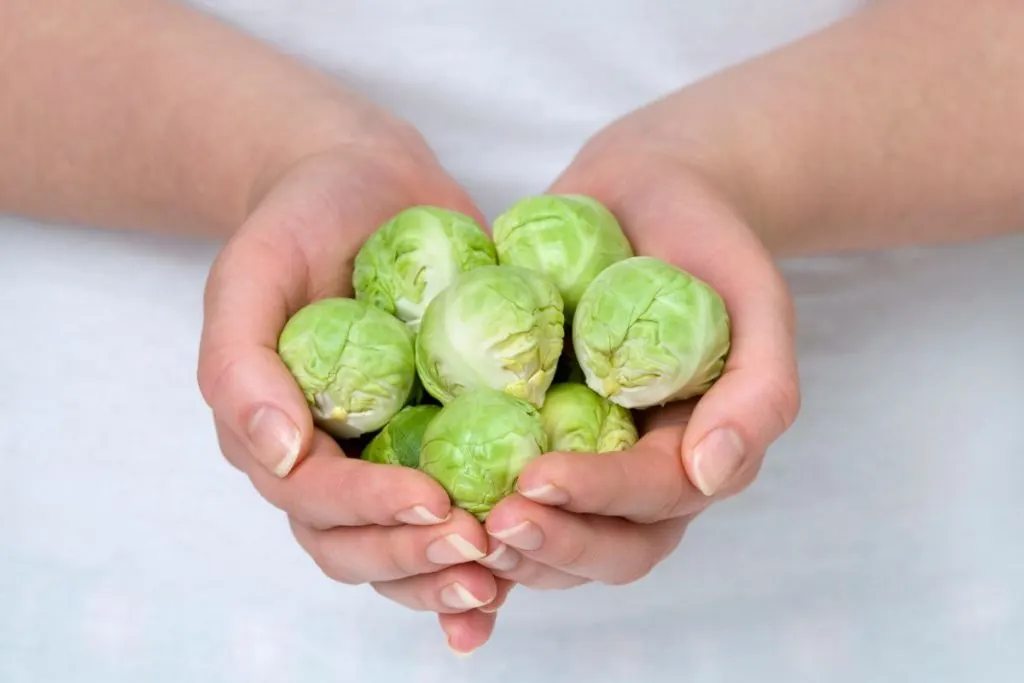
It is caused by the bacteria Verticillium affects a variety of vegetables, from watermelons to potatoes and all cabbage crops. There is no cure, once they attack brussels sprouts they often die.
Verticillium, also called Vert, usually causes less severe symptoms in Brussels sprouts than in other types of plants. In this case, however, less suffering means no harvest or a quick death.
So what signs are we talking about? Root and stem damage is mostly invisible, so you’ll notice it wilting before you see anything else. Brussel sprout heads might turn yellow as well.
Do not cook sprouts during this period and do not freeze brussels sprouts. Refrigerated brussels sprouts purchased should always be fresh, with no upcoming diseases.
Even with plenty of water, the plant wilts in the midday heat and recovers at night or in the morning. As the disease progresses, brown or yellow spots appear on the leaves.
Eventually, starting with the old leaves at the bottom, the leaves may die and fall off. What can be done without treatment?
Rotate crops to allow non-host plants to grow between plants for 4 years. ‘Capitola’ produces many bright green, medium-sized heads on straight stems, ideal if you want to collect whole stems for table display.
White Rust
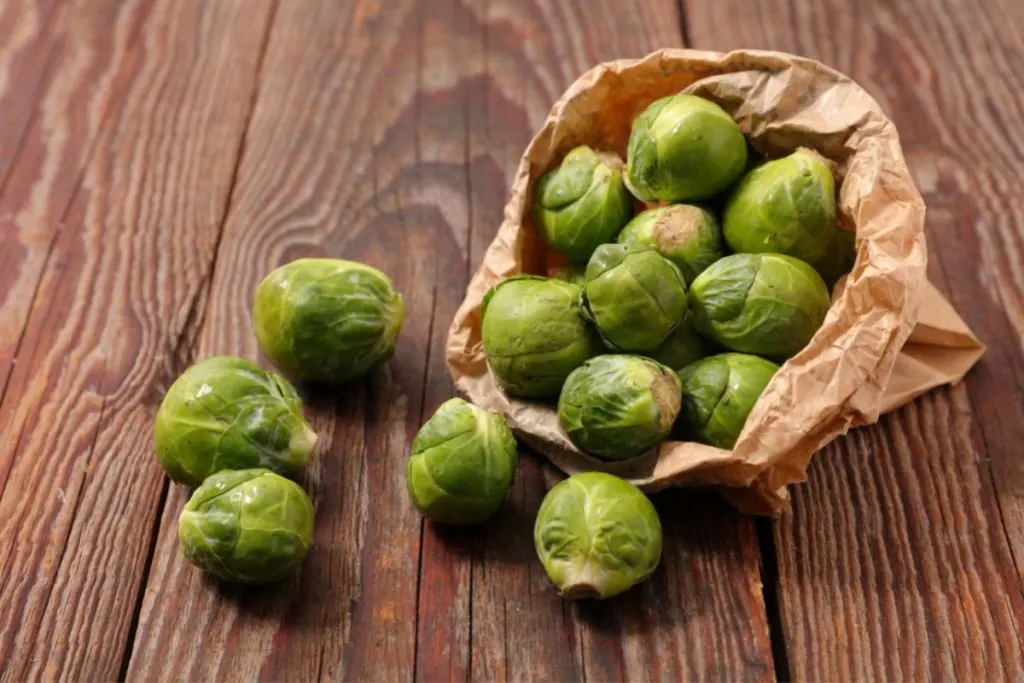
The oomycete Albugo candida causes a disease commonly known as white rust or white blisters in the cruciferous family.
The most obvious sign that a plant is infected with this pathogen is a waxy white swelling on the underside of the leaves. These will eventually turn brown. Leaf tips usually have yellow spots and buds may be small or twisted.
How To Avoid Black Spots On Brussel Sprouts?
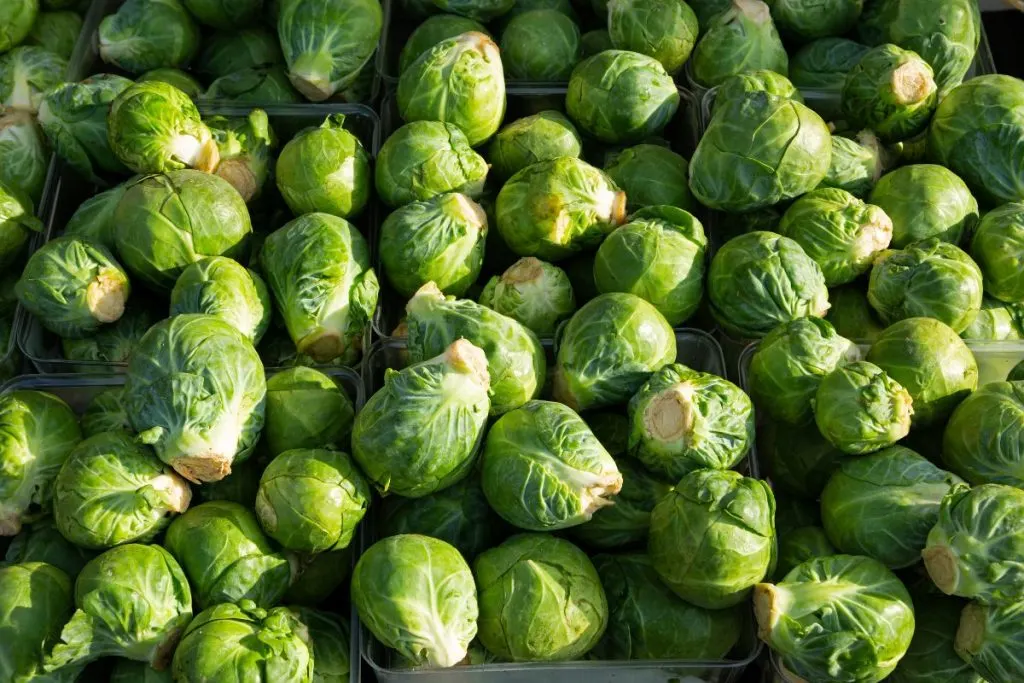
In order not to ask about treatment methods, the grower should think about preventive measures in advance. These include pre-plant soil digging in the fall;
- supplementing the soil before planting with elements of phosphorus, molybdenum, and boron;
- planting varieties resistant to fungal infections;
- dressing seeds with a 1% solution of potassium permanganate;
- planting vegetables after “real” predecessors, according to the rules of the crop ritual;
- modern and regular watering, fertilizers, soil loosening, and roots;
- storage of crops in a ventilated area at temperature indicators of 25 F to 30 F.
You can use vegetables with caution if the cause of the appearance of points was point necrosis. In this case, it is enough to just trim the warning spots.
If you grow the crop yourself, then problems can be avoided if you take care of the necessary prevention in time.
Can You Get Food Poisoning With Brussels Sprouts?
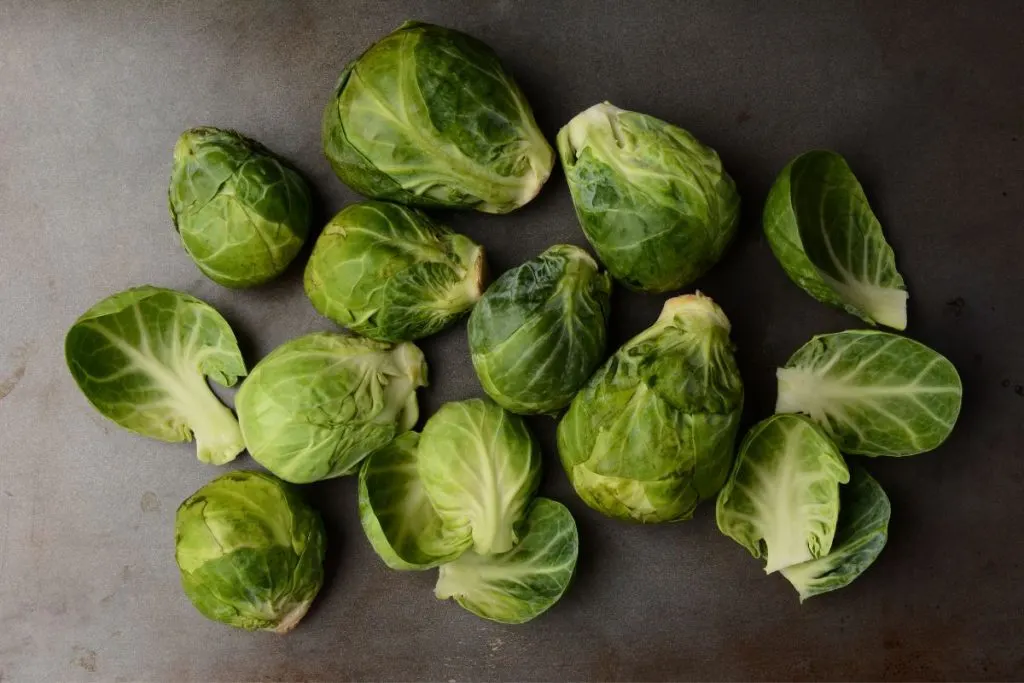
Brussel sprouts are bad if you see the soft texture, brown, yellow, or gray spots, Brussel sprouts leaves are wilted and smell unpleasant.
You should not eat them in such conditions because it could lead easily to food poisoning. The shelf life of these vegetables lasts from 3 weeks to 2 months at +32 °F in a ventilated package in the refrigerator.
Can You Get Sick From Eating Old Brussels Sprouts?
I’m sure you’re aware that some foods can have salmonella or other harmful bacteria, but the bacteria in Brussels sprouts are usually not dangerous in small doses.
You always want to wash it to reduce that risk. Uncooked brussels sprouts increase that risk too. However, it’s not sure that if you eat Brussel sprouts that are bad will make you sick, but they will be unpleasant, to say the least.
What Temperature Will Kill Mold?
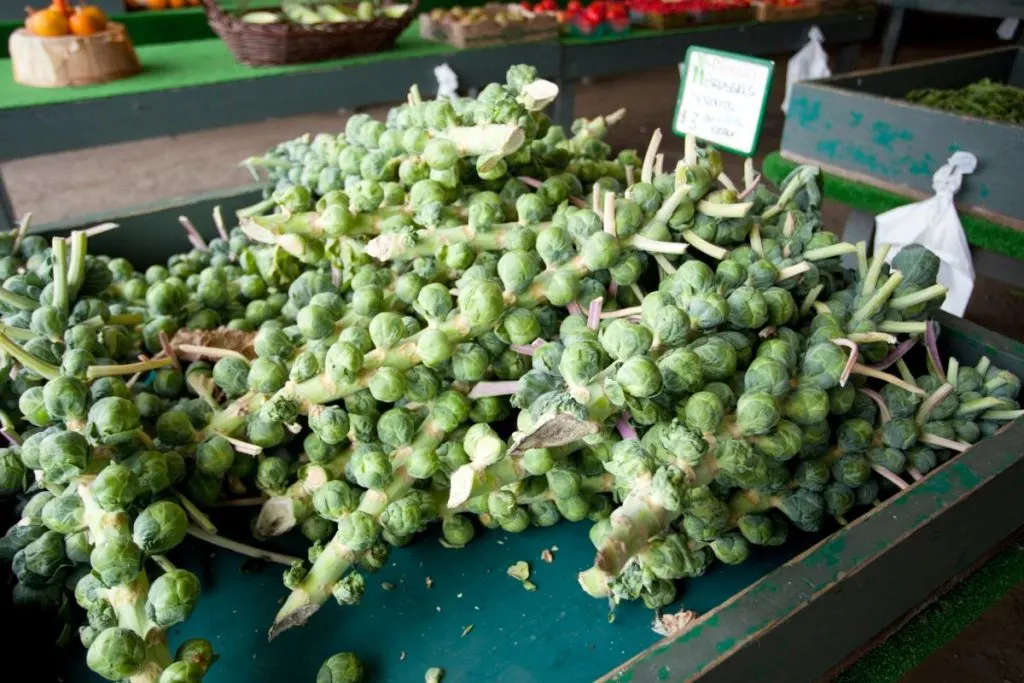
Most yeasts and molds are sensitive to heat and are destroyed by heat treatment at temperatures of 60-71° F.
However, some molds produce heat-resistant spores and can survive heat treatments in pickled vegetable products. These molds, however, require oxygen to grow.
History Of Brussel Sprouts
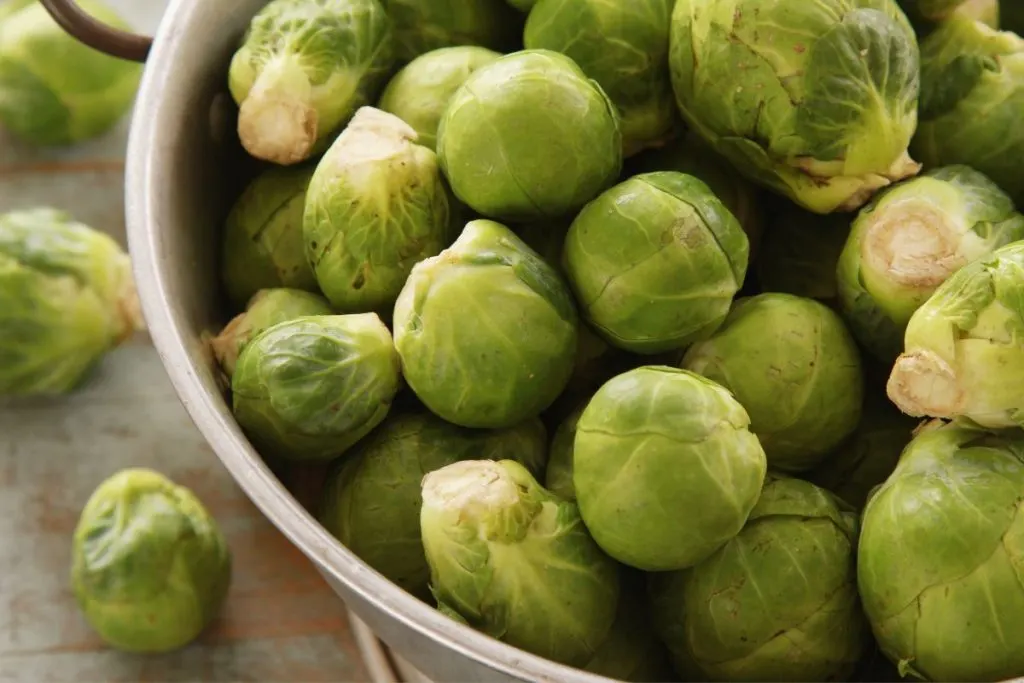
It is not known exactly where the umbilical cord comes from, but it is believed to have originally existed in Iran, Pakistan, and Afghanistan, and in China, it has been prescribed since ancient times as first aid for digestive problems.
Some believe that the ancestor of umbel kale was an ancient Roman crop. What is certain is that it was grown in Brussels as early as the 13th century, which is why it got the second name “Brussels cabbage”.
Whatever the origin of umbilical kale, what is important is that it deserves the label as one of the healthiest vegetables due to its numerous health benefits.
Final Thoughts On Black Spots On Brussel Sprouts
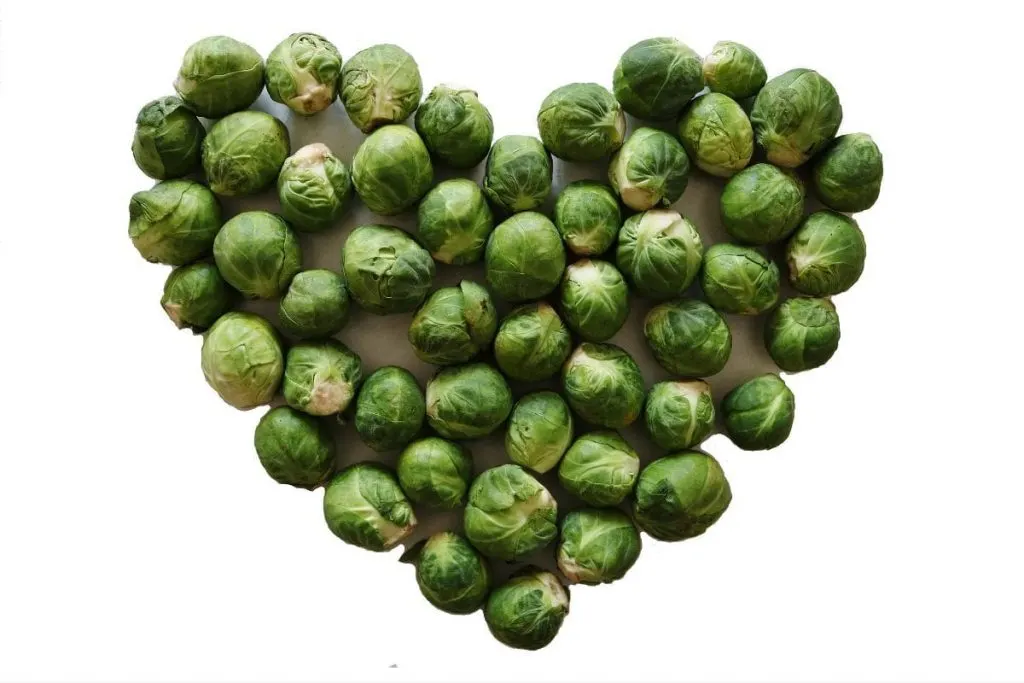
And we are already at the end. Did time fly by for you too?
I’m sure that the problems such as black spots on Brussel sprouts don’t seem so big to you now, if they are, at least now you know the solutions and you know the cause of those problems.
If you have carefully read this article, then you have no reason to worry. Your Brussels sprouts are now in good hands.
I am sure that tomorrow you already know what to do, and how to do it, and you can hope for a good outcome soon. Gardening has never been easier, has it?
That would be it for today, and that would be all about Brussels sprouts. See you soon, good luck!

